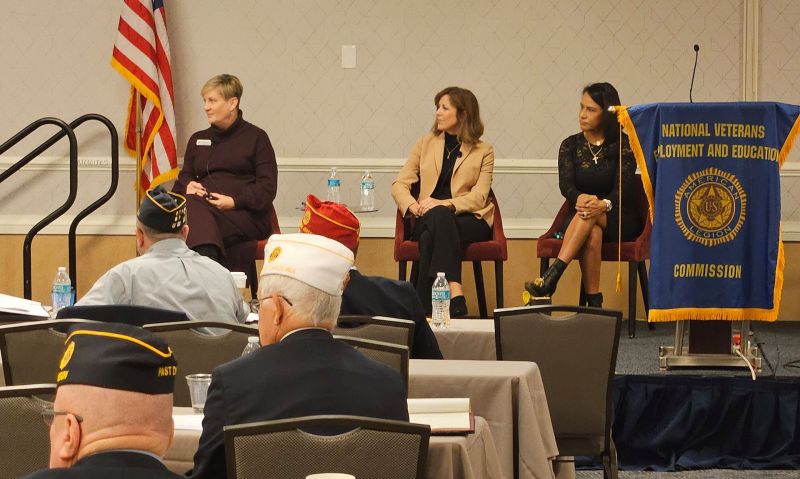
Tuition assistance program for servicemembers needs more funding, more awareness as recruiting tool
The American Legion supports an increase in the financial aid provided through the Department of Defense’s Tuition Assistance (TA) program. Members of the Veterans Employment & Education Commission were encouraged to share that support with their legislators — as well as help raise awareness of the benefit — during a panel discussion on Feb. 26 at the Washington Conference.
“I think it’s really important when you talk about this issue (to legislators), which is providing dollars for education or training, that they take the policy but don’t dictate the practice. For the longest time, for some reason, virtual education has been associated with poor quality. We’re taking that back,” said Meg O’Grady, senior vice president for military and government programs at National University.
The TA program provides financial assistance to active-duty servicemembers as they pursue voluntary education programs, but the aid is capped at $250 per credit hour and $4,500 per year. Those numbers haven’t changed since 2002.
That limit in financial assistance affects how long it takes for servicemembers to get a degree.
“That $4,500 a year, if maximized, would (take) seven years to get an associate degree,” O’Grady said.
In turn, that can force servicemembers to use other avenues to pay for education that they shouldn’t need to rely on. “We should not be seeing our servicemembers taking on student loans unless they’re getting grants,” said Esmeralda Silva, vice president for student affairs at Alliant International University.
The added years it would take to get a degree using only the TA program can also effectively make earlier learning obsolete.
“We know that if you started 12 years ago under that (STEM degree) curriculum, that’s not where that industry is any more,” said Angela Albritton, director of military relations and strategic initiatives at Embry-Riddle Aeronautical University. “Those STEM degrees are expensive, and if we’re looking at having the same business model to pay for those STEM degrees from 20 years ago, doing it now, we can all see there’s a gap here.”
The caps are also having a negative influence on the number of universities who accept active-duty servicemembers into their programs.
Silva said that the last time the Department of Defense memorandum of understanding governing the TA program was updated “there were 5,000 universities that signed that MOU to say that they would support active duty utilizing tuition assistance. … There’s less than 1,100 universities (now) that will continue to support that. So we’re also seeing that decline.
“One of our members, Central Texas College, the largest community college serving military students in this nation, is pulling out because they cannot sustain with the caps and continue to provide educational services at the cost point with the TA cap right now. Faculty in some of these programs are extremely expensive, and if you’re going to bring in faculty that are the top tier to teach in some of these areas, it’s critical. And so when you see our community colleges pulling out, there’s a crisis happening. It’s just not adding up,” Silva added.
Panelists also noted that the TA program is a benefit that isn’t publicized well enough, which can have an impact on recruiting in general.
“Less than 20 percent of our servicemembers utilize tuition assistance every year. … It is still an underutilized benefit to our servicemembers,” Silva said.
“We want to really emphasize that this is a wanted benefit and yet the awareness isn’t there that the benefit is available to them,” O’Grady said.
